hei tiki Pounamu (probably kawakawa variety) height 7 1/4in (18.4cm) Provenance The Estate of Raymond Raybould who was a partner at John Burke & Partners Antiques on Pembridge Road, London which closed circa 2005 Bearing an old label on the back with writing in script: "Maori tiki made of New Zealand greenstone/It represents an unborn child (illegible) emblem of (illegible)/It (illegible) old/It is quiet valuable" According to Roger Neich, 'Distinct from all of these forms, the jade breast ornament called hei-tiki is the most characteristic and most highly valued of all Maori personal ornaments. In some Maori origin myths, Tiki was the first man, having been created by the god Tane. Thus carvings of human figures in any material whether bone, stone or wood, may be called a tiki. The prefix hei indicates something suspended from the neck, as in hei-tiki and hei-matau. Hei-tiki may be worn by both men and women, usually hanging vertically but sometimes horizontally from a suspension point on the side, especially by women. They are passed down through the generations as family heirlooms, and during a funeral they will be displayed near the deceased, along with other family heirlooms. With their own personal names, many hei-tiki are remembered in tribal songs and oral histories. Most of the mana or prestige of the hei-tiki derives from its close contact with those great ancestors who have worn it in the past, rather than from any magical or mystical meaning. Some would argue for a phallic symbolism in hei-tiki, while others claim that they represent fertility, perhaps in the form of a human embryo. Most commentators would agree that many of the current meanings attached to hei-tiki are relatively recent interpretations of an ancient symbol refined by many generations of artists. It is only natural that such a potent image as the hei-tiki would be subject to continuing reinterpretation. Consequently, any search for the "original meaning" of the hei-tiki is probably futile.' (Pounamu: Maori Jade of New Zealand, David Bateman Ltd., Auckland, 1997, pp. 23-25) Carved from fine, dark-green pounamu, most likely from an adze due to the straight, flat sides, this example is exceedingly thick, being approximately 1 1/2in (3.5cm) in its chest area, the top of the head with a bi-funnel suspension hole.
hei tiki Pounamu (probably kawakawa variety) height 7 1/4in (18.4cm) Provenance The Estate of Raymond Raybould who was a partner at John Burke & Partners Antiques on Pembridge Road, London which closed circa 2005 Bearing an old label on the back with writing in script: "Maori tiki made of New Zealand greenstone/It represents an unborn child (illegible) emblem of (illegible)/It (illegible) old/It is quiet valuable" According to Roger Neich, 'Distinct from all of these forms, the jade breast ornament called hei-tiki is the most characteristic and most highly valued of all Maori personal ornaments. In some Maori origin myths, Tiki was the first man, having been created by the god Tane. Thus carvings of human figures in any material whether bone, stone or wood, may be called a tiki. The prefix hei indicates something suspended from the neck, as in hei-tiki and hei-matau. Hei-tiki may be worn by both men and women, usually hanging vertically but sometimes horizontally from a suspension point on the side, especially by women. They are passed down through the generations as family heirlooms, and during a funeral they will be displayed near the deceased, along with other family heirlooms. With their own personal names, many hei-tiki are remembered in tribal songs and oral histories. Most of the mana or prestige of the hei-tiki derives from its close contact with those great ancestors who have worn it in the past, rather than from any magical or mystical meaning. Some would argue for a phallic symbolism in hei-tiki, while others claim that they represent fertility, perhaps in the form of a human embryo. Most commentators would agree that many of the current meanings attached to hei-tiki are relatively recent interpretations of an ancient symbol refined by many generations of artists. It is only natural that such a potent image as the hei-tiki would be subject to continuing reinterpretation. Consequently, any search for the "original meaning" of the hei-tiki is probably futile.' (Pounamu: Maori Jade of New Zealand, David Bateman Ltd., Auckland, 1997, pp. 23-25) Carved from fine, dark-green pounamu, most likely from an adze due to the straight, flat sides, this example is exceedingly thick, being approximately 1 1/2in (3.5cm) in its chest area, the top of the head with a bi-funnel suspension hole.
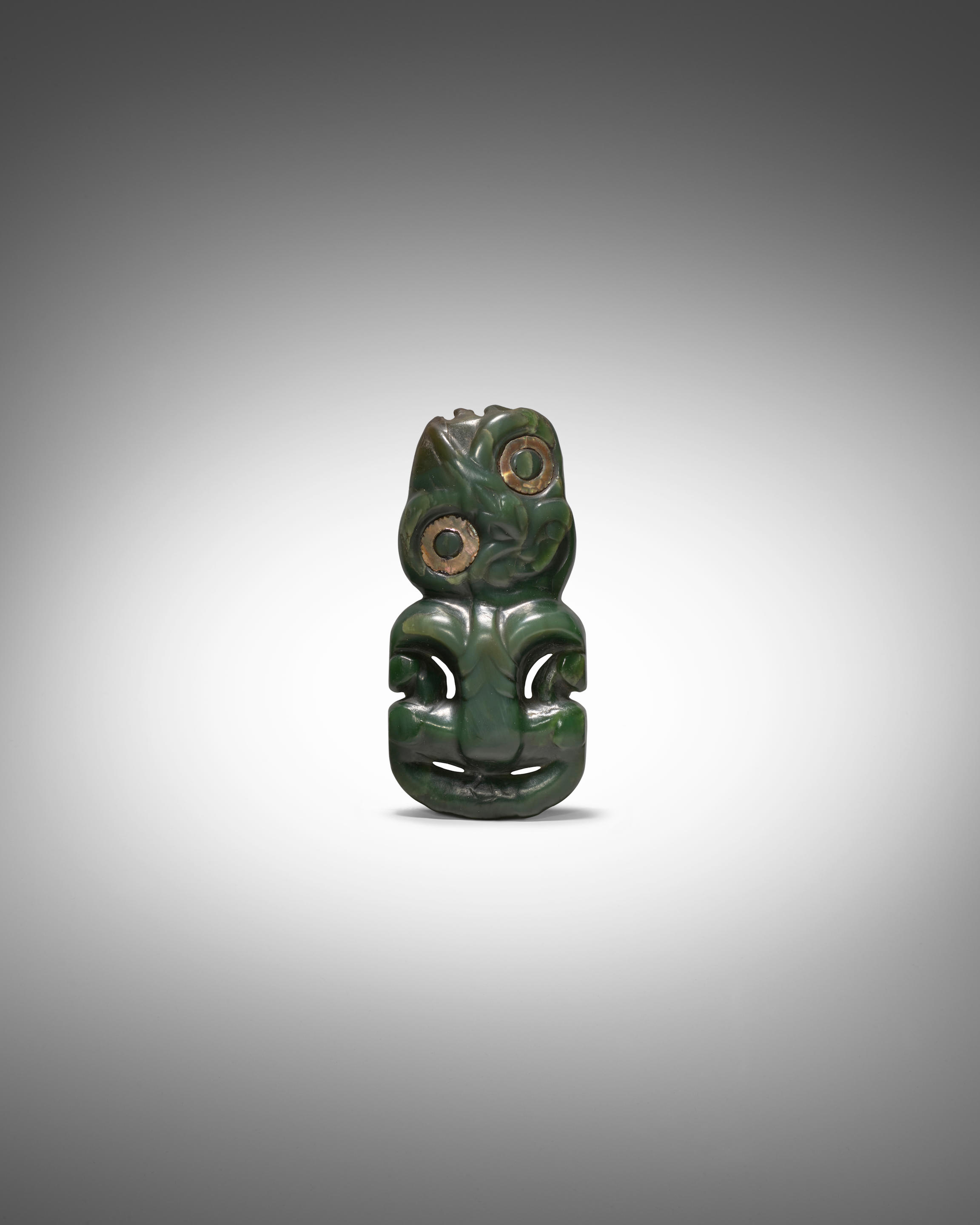
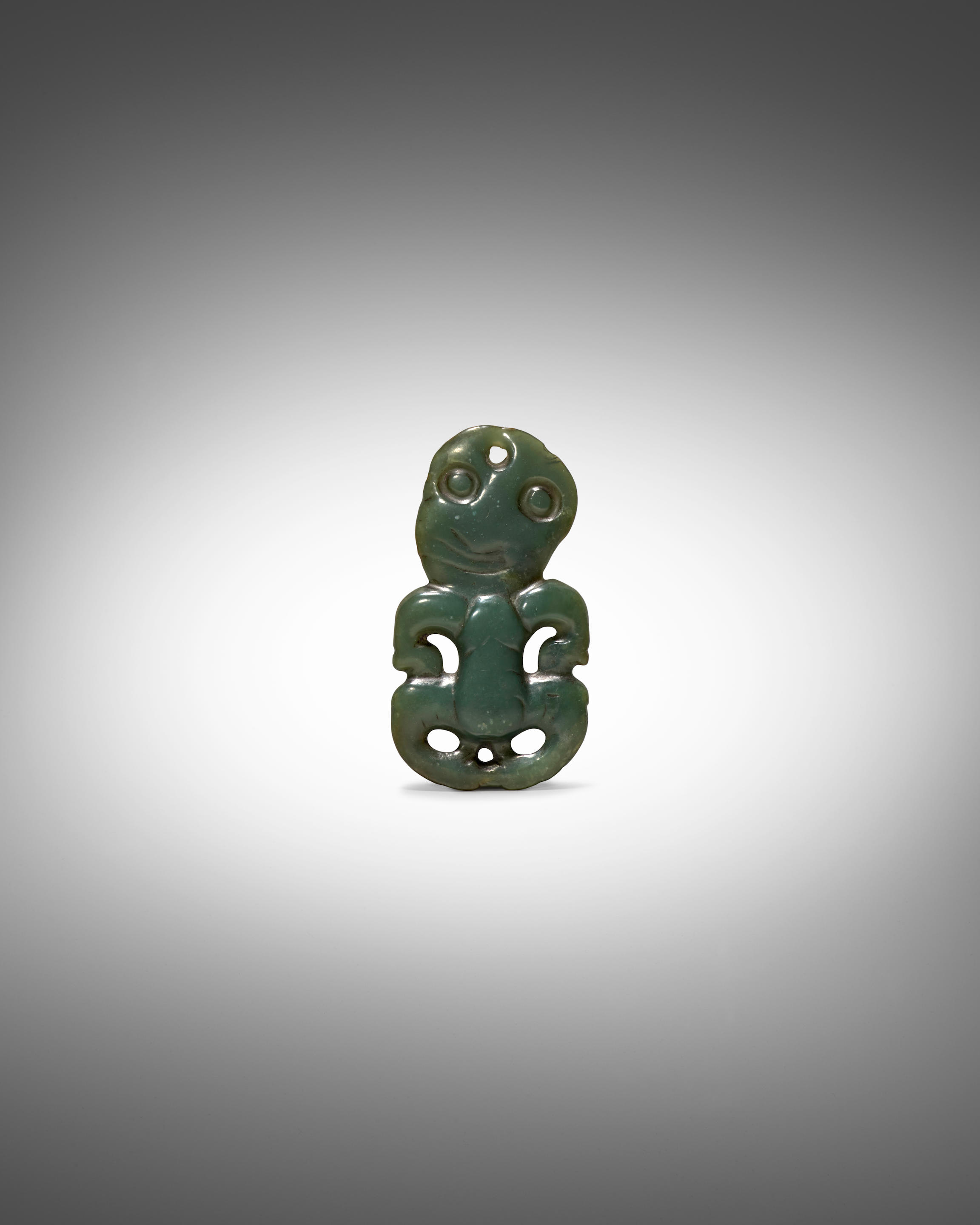
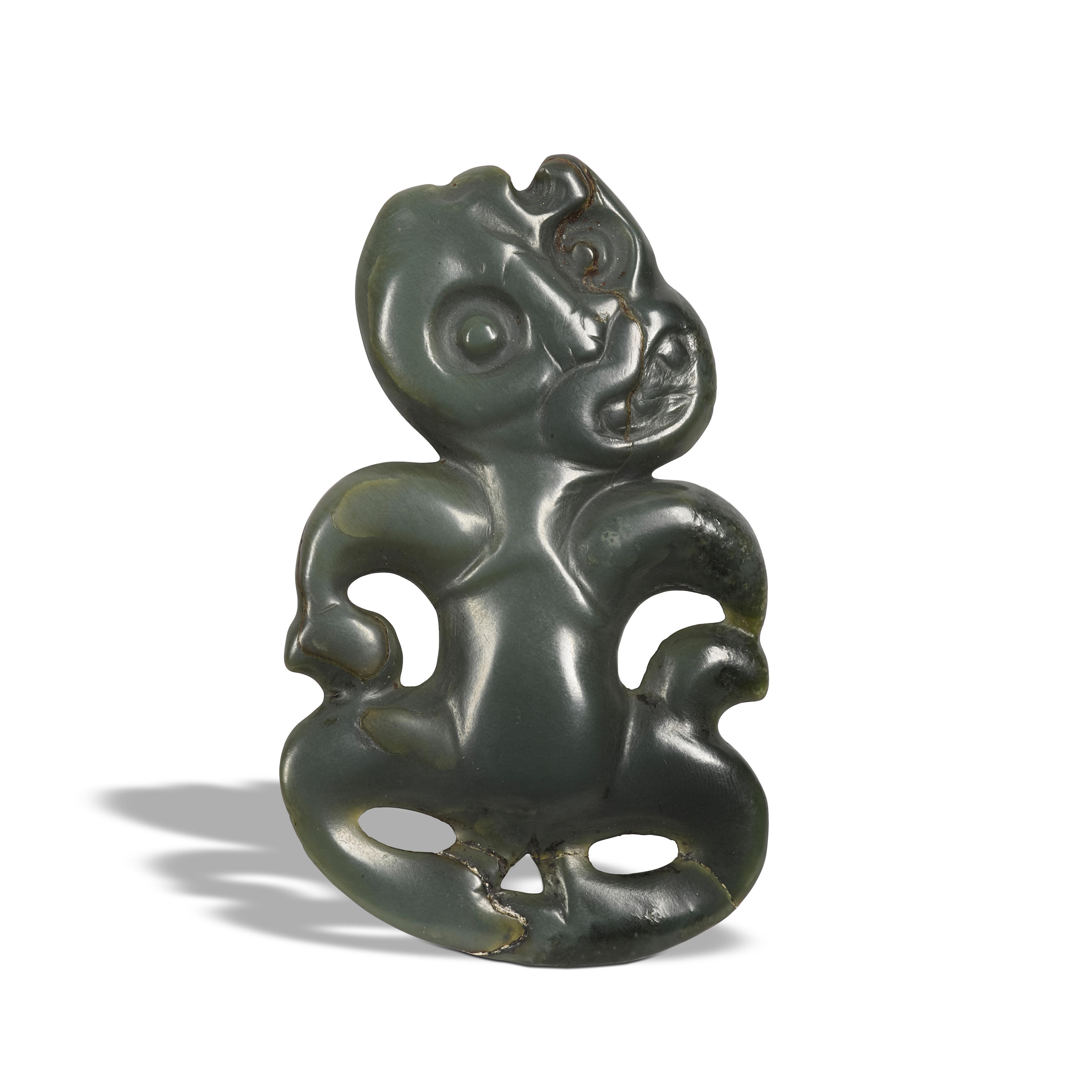

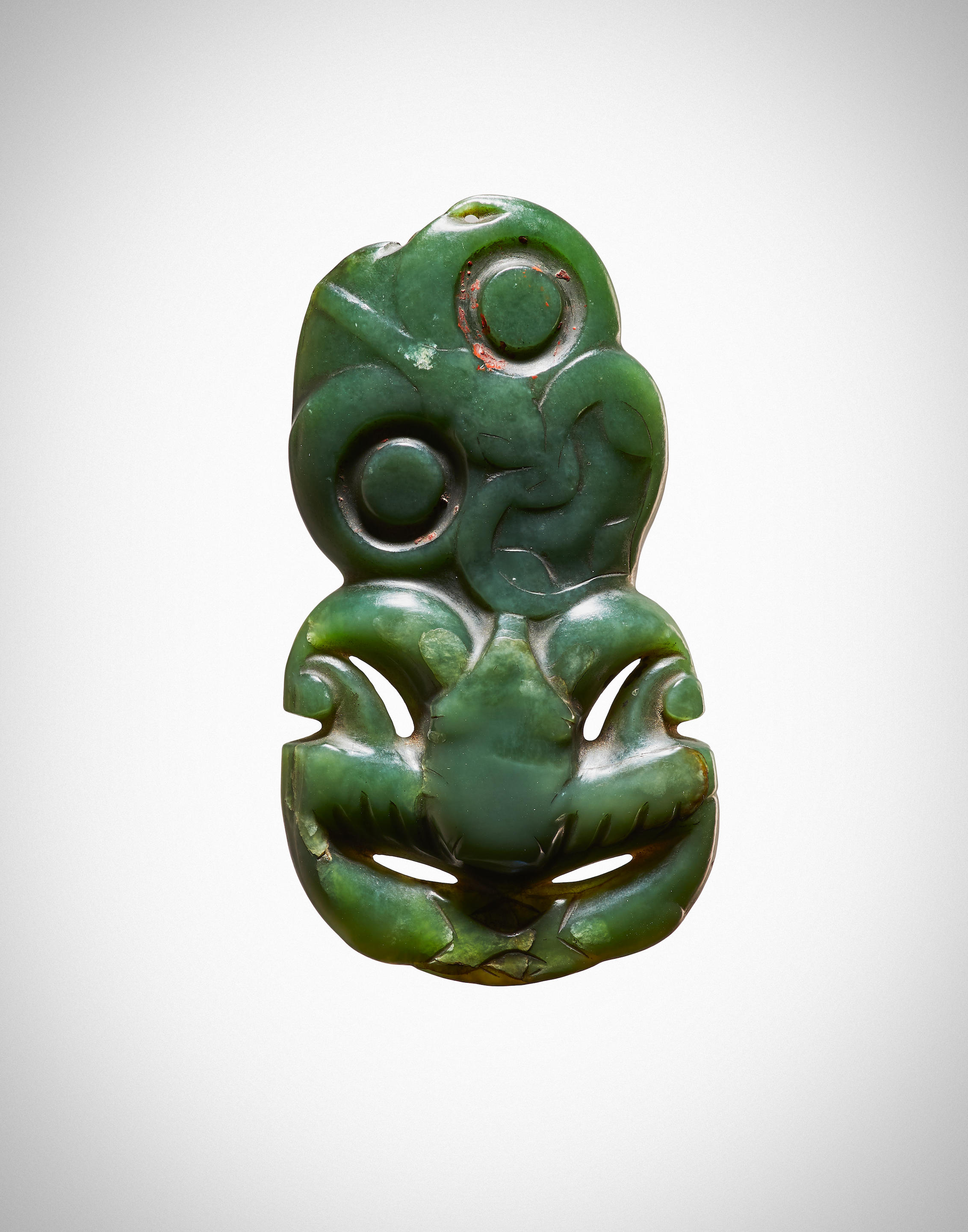

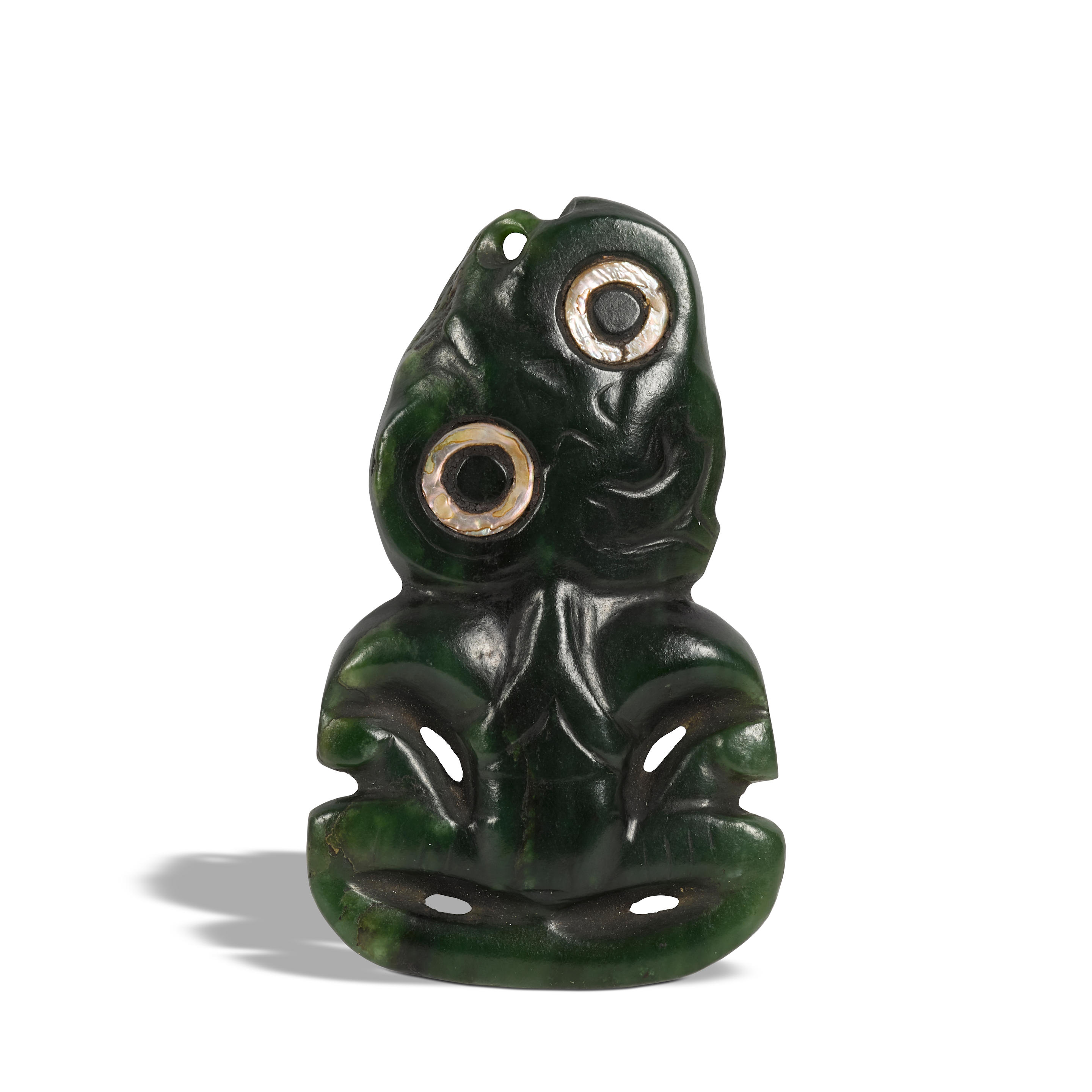
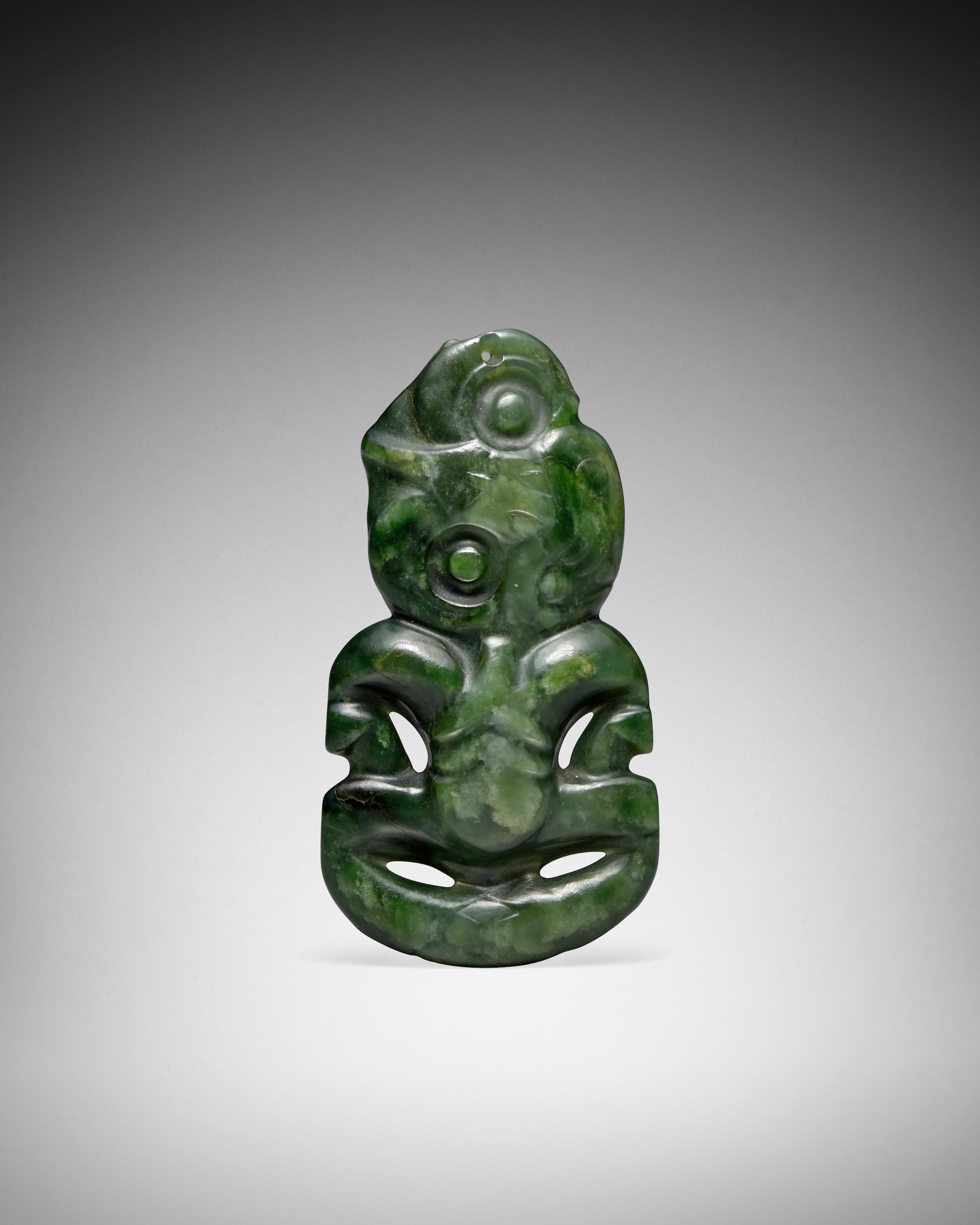
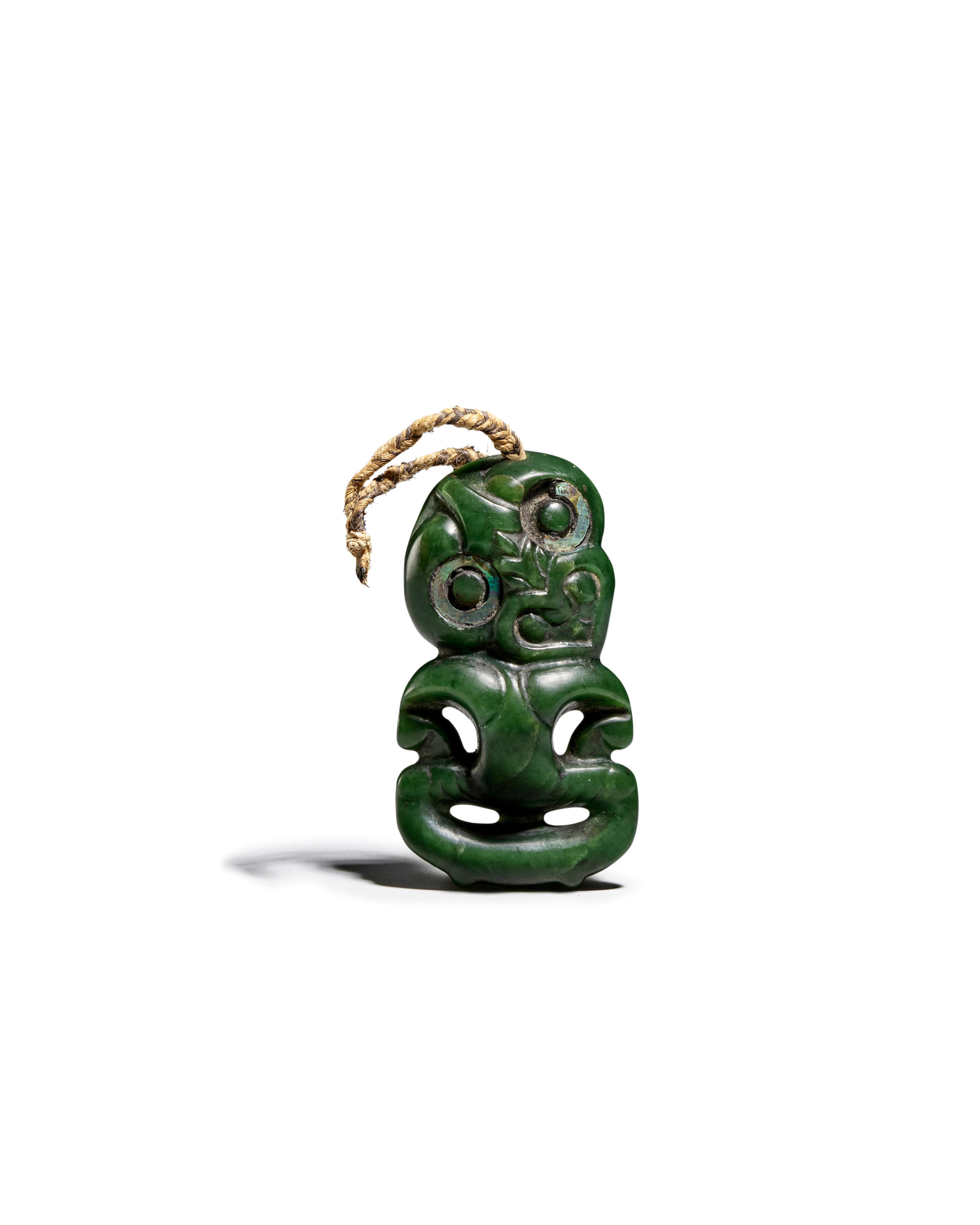

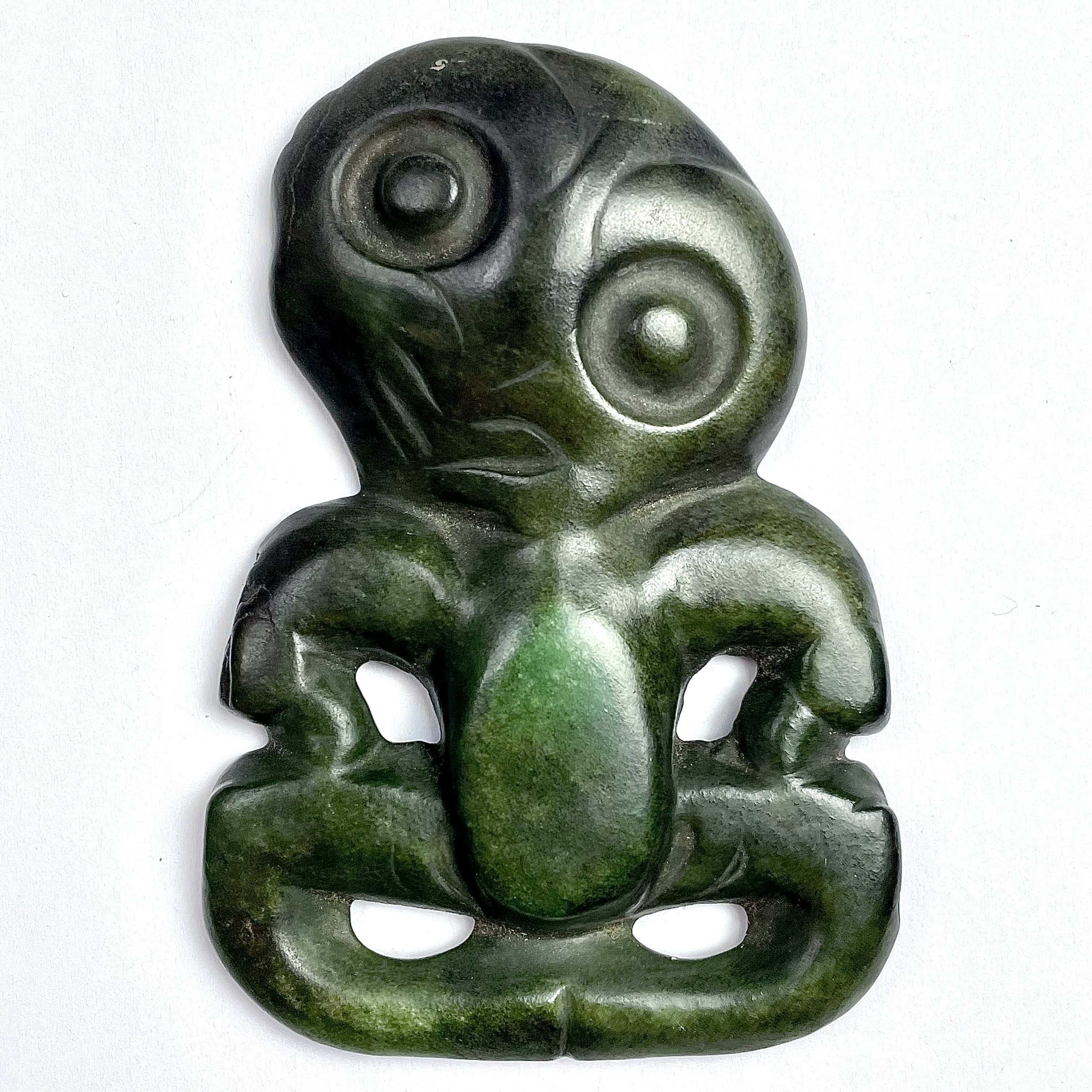
Try LotSearch and its premium features for 7 days - without any costs!
Be notified automatically about new items in upcoming auctions.
Create an alert